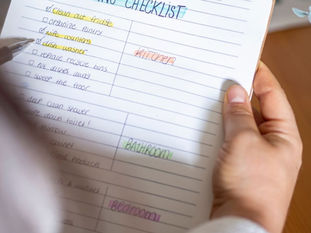

Understanding the Water Damage Restoration Process: What Homeowners Need to Know
Mar 20
3 min read
0
12
0
Water damage can happen fast—whether from a burst pipe, storm, or appliance failure. When disaster strikes, quick action is critical to preventing further damage and costly repairs.
At Clean Way Restoration, we follow a structured water damage restoration process to restore your home as quickly and safely as possible. Understanding this process helps homeowners know what to expect, ensuring a smoother recovery.
Step 1: Emergency Contact and Initial Assessment
📞 What Happens: When you call a restoration company, a trained team is dispatched to assess the damage. Using moisture detection tools, they evaluate the affected areas, determine the extent of the water damage, and develop a restoration plan.
💡 Why It Matters: The faster professionals arrive, the lower the risk of secondary damage, such as mold growth, wood warping, and structural issues. Immediate action also helps salvage more of your belongings.
Step 2: Water Damage Removal and Extraction
🚰 What Happens: Using high-powered pumps, vacuums, and extractors, restoration experts remove standing water from affected areas. This includes water in carpets, furniture, walls, and ceilings.
💡 Why It Matters: The longer water sits, the deeper it seeps into materials, causing irreversible structural damage and increasing the chances of mold growth within 24-48 hours. Fast water removal reduces long-term repair costs.
Step 3: Drying and Dehumidification
💨 What Happens: Even after visible water is extracted, moisture remains trapped in building materials like drywall, wood, and insulation. High-powered dehumidifiers, air movers, and industrial fans work together to dry out your home.
💡 Why It Matters: Moisture trapped in hidden spaces can lead to rotting, mold outbreaks, and musty odors. Professional drying ensures every part of your home is properly dehumidified, preventing further damage.
Step 4: Cleaning and Sanitizing
🧼 What Happens: All affected surfaces—including floors, walls, and furniture—are disinfected using professional-grade antimicrobial treatments. If necessary, deep cleaning methods like steam cleaning and deodorization are used to remove contaminants and odors.
💡 Why It Matters: Floodwater and sewage backups contain harmful bacteria and pathogens. Even clean water leaks can cause mildew and musty smells. Proper sanitation eliminates health hazards and restores a safe indoor environment.
Step 5: Mold Prevention and Remediation
🔬 What Happens: Mold prevention starts immediately. Restoration teams inspect for early mold growth, applying antimicrobial treatments to stop its spread. If mold is present, proper containment and remediation techniques are used.
💡 Why It Matters: Mold spores spread quickly and can cause respiratory issues, allergies, and damage to building materials. Preventing mold growth early saves homeowners from expensive future repairs.

Step 6: Structural Repairs and Full Restoration
🔨 What Happens: Some water damage can be repaired, while other cases require rebuilding. Restoration teams replace ruined drywall, flooring, insulation, and ceilings. In severe cases, full reconstruction may be necessary.
💡 Why It Matters: Water damage weakens structural integrity, leading to sagging ceilings, rotting wood, and unstable flooring. Proper repairs restore your home’s safety, comfort, and value.
Why Call Clean Way Restoration?
At Clean Way Restoration, we manage the entire water damage restoration process—from the moment disaster strikes to the final repairs.
✅ Fast emergency response to minimize damage
✅ Advanced drying technology to prevent mold and rot
✅ Comprehensive cleaning and sanitization for safety
✅ Full structural repairs to restore your home
✅ 37 years of expert service, ensuring peace of mind
💧 Experiencing water damage? Call Clean Way Restoration today! We work fast to protect your home, prevent further damage, and restore peace of mind.











